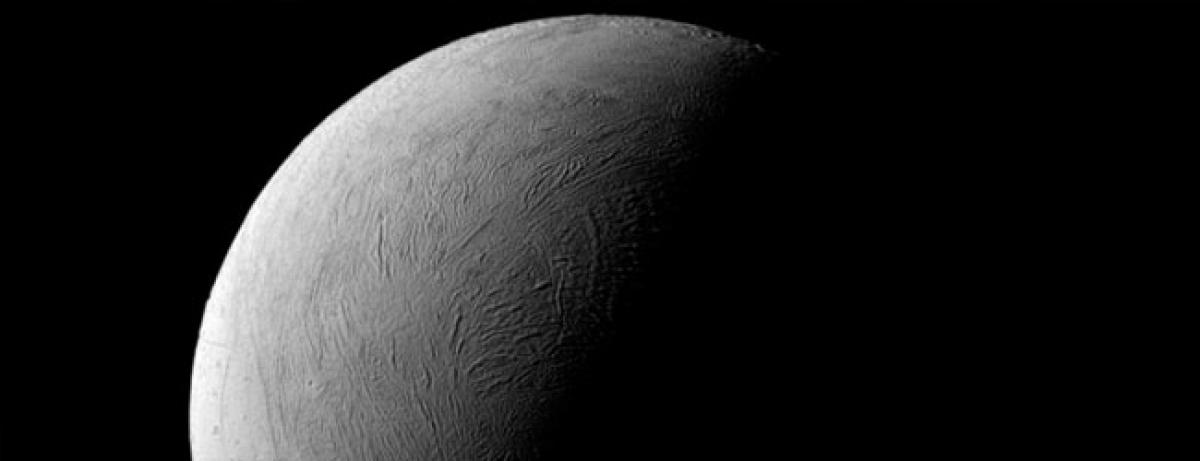Live
- Formula E race: KTR to be arrested soon?
- Film fraternity stands with Allu Arjun
- New CUAP campus faces security challenges
- HC grants protection to Allu Arjun from arrest
- Stampede victim’s husband ready to withdraw case against Allu Arjun
- Tomatoes price falls drastically to Rs 1 per kg at Pathikonda agri market
- Police clarify on Sandhya Theatre mgmt’s letter, deny allegations of misbehaving with Allu Arjun
- Ecotourism offers career opportunities
- PVKK IT Diploma College celebrates Freshers’ Day
- Politicos RISE to defend ‘Pushpa’
Just In

Scientists, using a computer model, have unraveled the mystery behind the sustained eruptions on Saturn\'s icy moon Enceladus, which serves as a leading candidate for extraterrestrial life.
Washington: Scientists, using a computer model, have unraveled the mystery behind the sustained eruptions on Saturn's icy moon Enceladus, which serves as a leading candidate for extraterrestrial life.
The Cassini spacecraft has observed geysers erupting on Enceladus since 2005, but the process that drives and sustains these eruptions has remained a mystery.
Now scientists at the University of Chicago and Princeton University have pinpointed a mechanism by which cyclical tidal stresses exerted by Saturn can drive Enceladus' long-lived eruptions.
"On Earth, eruptions do not tend to continue for long. When you do see eruptions that continue for a long time, they'll be localised into a few pipe like eruptions with wide spacing between them," said Edwin Kite from University of Chicago.
But Enceladus, which probably has an ocean underlying its icy surface, has somehow managed to sprout multiple fissures along its south pole, researchers said. These "tiger stripes" have been erupting vapour and tiny frost particles continuously along their entire length for decades and probably much longer, they said.
"It's a puzzle to explain why the fissure system doesn't clog up with its own frost," Kite said. "And it is a puzzle to explain why the energy removedfrom the water table by evaporative cooling doesn't just icethings over," he added.
According to him, what is needed is an energy source to balance the evaporative cooling."We think the energy source is a new mechanism of tidal dissipation that had not been previously considered," Kitesaid.
Enceladus, which Kite calls "an opportunity for the best astrobiology experiment in the solar system," serves as a leading candidate for extraterrestrial life.
Cassini data have strongly indicated that the cryovolcanic plumes of Enceladus probably originate in a bio molecule-friendly oceanic environment.
"Cryovolcanism may also have shaped the surface of Europa, one of Jupiter's moons. Europa's surface has many similarities to Enceladus's surface, and so I hope that this model will be useful for Europa as well," said Kite.
Kite and Allan Rubin from Princeton University wanted to know why Enceladus maintains a base level of cryo volcanic activity, even when at that point in its orbit where the fissures should clamp shut and curtail the eruptions.
The findings were published in the journal PNAS.

© 2024 Hyderabad Media House Limited/The Hans India. All rights reserved. Powered by hocalwire.com







